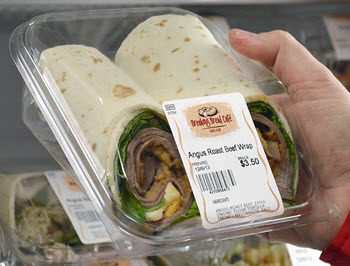What Happened to the Food Labels?
Posted on 15th Aug 2017

Something mysterious has been happening at the University of Montana (UM) in Missoula. Nutrition facts labels, also known as food labels, have been slowly disappearing in the school cafeteria. While no one at the university said anything about it, the disappearing food labels finally caught the attention of reporters at the school newspaper, which ran a story on it in late April 2017.
The reason the labels are disappearing?
Plain and simple: the students are not only reading them, but they are also taking the time to read nutrition facts labels thoroughly.
Campus dining director Campbell Howard told the student paper that the students were taking so much time reading food labels, it was slowing down the cafeteria line, causing congestion, and delaying the checkout process. To expedite the line, the university posted the nutrition facts information online.
However, like most of us, students make food selections on the spot and we expect the food label to be there, to help guide us in our selection.
Further, this story reveals an important truth: just about all of us stop to read nutrition labels today. We want to know what is in the food we eat. This includes the calorie count (a key concern) but also other things such as how much sodium, fat, types of fat, and other items are in the food we select.
The fact that students are reading nutrition labels should come as no surprise. About four years ago, a study by New York University and Yale reported the following:
"A whopping 98 percent of college students say it is “a good idea” to have nutrition information directly on food products, menus, and/or menu boards."
Further, eighty-eight percent indicated that the nutrition information did affect their food choices. And as referenced earlier, the calorie count of foods is a big concern. In this survey, nearly half of the students reported that they use the labels to help them select less-fattening or lower-calorie food items.
Interestingly, the study also asked students if it bothered them that reading food labels slowed down the cafeteria line. Nearly 30 percent said they were embarrassed about it, but the study did not indicate this caused them to change their behavior.
While those involved in campus food-service operations might understand why UM made this move, it is in the opposite direction most food retailers are moving when it comes to food and menu labeling. Major food chains such as grocery stores, fast-food outlets, and others are adding nutrition information to their food menus and products. And next year, if it goes through, the US Food and Drug Administration may require more organizations to add food labels along with more information on their food products.
It all comes down to this: food labels are important. People want to know what is in the food they eat.
For more information on food labels and advanced food-labeling terminals and systems, contact a DayMark Safety Systems representative.


